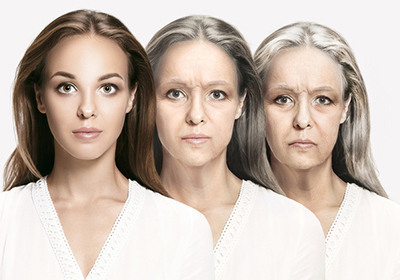
Author: Doug Dollemore

A few years ago, NASA selected Scott and Mark Kelly for a unique mission. The identical twins, both astronauts, were followed for a year while Scott was in space aboard the International Space Station and Mark was earthbound.
NASA researchers wanted to detect any differences in health and biology that occurred between the brothers over the course of Scott’s space flight. Compared to Mark, the researchers found plenty of changes in Scott’s physiology, including alterations in his eyeballs and vascular system that suggest his body was restructuring itself.
But this out-of-this-world experiment could also have some down-to-earth implications for all of us.
What NASA scientists were exploring is akin to something known on Earth as the exposome, the cumulative measure of the lifelong effects of environment, diet, and lifestyle on the body, according to Ramkiran Gouripeddi, MBBS, MS, an assistant professor in the Department of Biomedical Informatics at the University of Utah.
Every person’s exposome is different, even within identical siblings, says Gouripeddi, who recently received a National Academy of Medicine (NAM) grant to study how the exposome affects aging.
How these cumulative exposures interact with unique characteristics such as genetics and physiology can have a tremendous influence on an individual’s health. So, for instance, one person exposed to a harmful substance might develop cancer while another person with the same level of exposure might not.
The challenge, Gouripeddi says, is that few individuals are fully aware of their environmental exposures or can recall many aspects of their diet and lifestyle across their lives. To overcome these gaps, Gouripeddi and his colleagues at the Center of Excellence for Exposure Health Informatics are using machine learning and artificial intelligence techniques to create comprehensive clusters of individual exposomes so they can be used in aging research.
As a proof of concept, the project, supported by NAM, will explore the effects of air quality in Utah on aging and age-related conditions, including respiratory disorders, cognitive decline, dementia, and Parkinson’s disease.
During the next two years, Gouripeddi and Julio Facelli, PhD, vice chair of the Department of Biomedical Informatics at U of U, will analyze clinical data from disease specific patient registries and electronic medical records for diagnoses of Parkinson’s and other age-related disorders. Then, based on ZIP code, they will gather information about the air quality of the areas of state where these patients reside.
Next, the researchers will gather information about historic migratory patterns in the state, based on data collected by the U.S. Census Bureau. Finally, they will use artificial intelligence to merge all of this information into a set of exposomes that account for lifelong exposure to pollutions and the onset of age-related diseases within the state.
“This study could provide some insight into the effects of air quality on the aging process,” Gouripeddi says. “An association between a specific air pollutant and a specific age-related disease could help us better understand the underlying conditions that contribute to the onset of that disorder.”
####